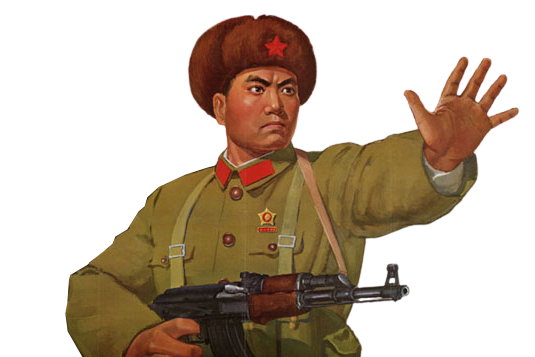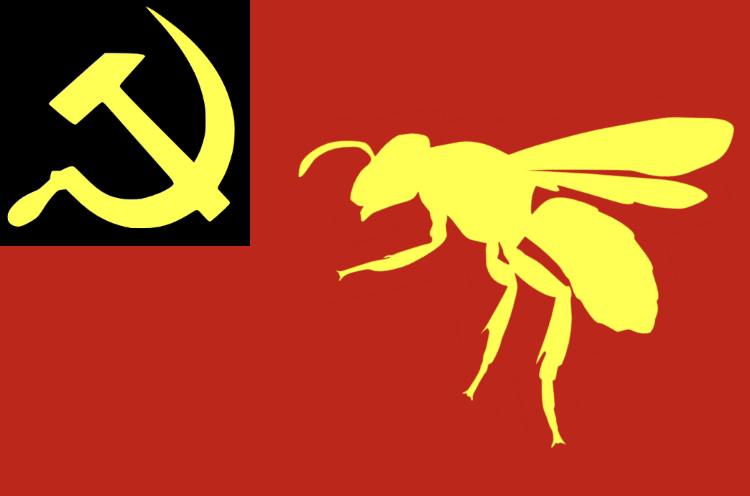- cross-posted to:
- worldnews@lemmy.ml
“Those cancellations show that China can get wheat cheaper from others,” said Ben Buckner, chief grains analyst for AgResource Co.
how are those sanctions against Russia workin’ out for ya, are you winning USA?
 mr. putin can you please team up with the country sanctioning you to help us fight your next door neighbor of several centuries sir??? i am good at geopolitics
mr. putin can you please team up with the country sanctioning you to help us fight your next door neighbor of several centuries sir??? i am good at geopolitics“No”

Communism no food (needing to be imported)
To be fair, agriculture in China is a lot more challenging than say, the US and Russia because of their mountainous terrains that made automation difficult. To sustain a 1.4bn population, importing food is almost inevitable.
However, that doesn’t excuse the fact that in the 1990s and especially since joining the WTO in 2001, China has allowed foreign ag giants to enter and flooded the agricultural sector with patented GMO seeds that destroyed the domestic competitors (for example, Monsanto’s Roundup Ready line that entered Brazil and Argentina in 1996, and then into China in the late 1990s). The soybean crisis was one of the greatest humiliation that China suffered in the hands of American imperialism in the 2000s, and it played a major role in robbing China of their own food security for the past two decades.
yeah if you read similar reports china is also importing even more soy than before
 but it seems they are shifting to get more from brazil and argentina
but it seems they are shifting to get more from brazil and argentinacan confirm they’ve been buying a lot from brazil for at least a decade, i am pretty sure we are like the biggest producer in the world right now, but i have the suspicion that majority of the soy that stays in brazil is used for like feed farm animals and making biodiesel
Yeah I read about importing soy from amerika. It seems it’s really high quality and because the populace seems to like it more than domestic? Also amerika has very sophisticated machinery & production methods (for now).
Do you have any recommendations on literature about the Soybean Crisis?
I am not aware of any literature in English. I have been piecing together information from articles in Chinese to write a story about it, but haven’t finished yet.
The quick rundown is this:
In the summer of 1974, a 12-member team of plant scientists from USDA visited China on an expeditionary field trip to study the rural development program in China and as an exchange program with Chinese agricultural scientists. This was a trip of goodwill gesture that took place merely 2 years after the historic Nixon-Mao meeting to normalize the relations between both countries.
Among the team was Richard L Bernard, a soybean breeder from the US Regional Soybean Laboratory in Urbana, IL., who had traveled across several provinces to study and collect wild soybean plants, first in Jilin, then Shenyang, then Nanjing and Shanghai. This detail will become important later on.
The American scientists left China spending a month there, and compiled their findings into a report titled The Rural Development System of the People’s Republic of China: Impressions and Questions. (Note: evidence of Bernard’s participation in the report).
Nothing seemed unusual, both sides bid their farewells and went their own ways. It is now widely believed that this innocuous trip laid the foundation for the weaponization of food imperialism against China decades later.
Time jump 20 years to 1995. Monsanto launched the world’s first commercial GMO soybean product: the Roundup Ready soybean line that conferred superior yield, growth and extreme resistance to pesticides. The seeds would make their ways into Brazil and Argentina in 1996, then in the late 1990s, Monsanto would distribute the seeds for free to Chinese farmers amidst economic stagnation (the PRC was undergoing its first economic crisis in 1995-96 at the time), who were desperate to make up their losses.
The uneducated Chinese farmers ceded away their legal rights when they were coaxed into signing Monsanto’s Roundup Ready Technology Agreement, among which included that the farmer must pay ”120 times the technology fee plus the legal fees if s/he is caught violating the agreement.” (GRAIN)
Unaware of the implications, and as the GMO seeds would soon dominate the world’s soybean production, reaching a global average of 80% being GMO soybean, China increasingly relied on importing foreign GMO soybean seeds and especially after joining the WTO in 2001, the relaxation of trade regulations further exacerbated the reliance on foreign seeds.
In 1999, Monsanto would file a patent in 81 countries claiming intellectual property rights on soybeans with an enhanced yield (WO0018963). This patent would give Monsanto the “monopoly rights on Glycine soja (wild soybean), in particular the PI407305 strain from southern China and all its progeny. Further, the patent extends to any soybean carrying the yield genes.” (GRAIN) (i.e., any genetically modified progeny based on the parental Chinese soybean strain is now an intellectual property of Monsanto)
Then, in April 2000, the monopoly rights would be extended to 101 countries, including China.
What’s the problem here? Well, China did not even realize that Monsanto had filed a patent claiming copyrights on Chinese wild soybean strain, and was only made aware of the fact when contacted by a German Greenpeace activist.
Investigative work done by Chinese activists and law students would eventually uncover that the Monsanto’s soybean sample very likely came from the USDA repository, and the only information available about the sample was that it was collected near Shanghai. There was no official record of such exchange ever taking place, and it is widely believed that it came from among the samples smuggled by Bernard during his field trips to several Chinese provinces more than 20 years ago.
Now that China has lost its soybean rights to a multinational corporation, it’s time to destroy the Chinese agricultural sector once and for all.
In August 2003, bad weather and pests caused the soybean production in Midwestern America to fall, prompting the USDA to reduce its soybean inventory to a 20-year low. As soybean is a staple food product in China, many food processing companies panic bought the soybeans, causing the price to spike between August 2003 and April 2004, and the soybean futures under Chicago Board of Trade went from $540 in August 2003 to $1060 in April 2004, a 30-year high (the producer price in China spiked from 2300 yuan/ton to 4400 yuan/ton).
By April 2004, as the price reached its peak, USDA reversed its position and increased soybean inventory, and flooded the global commodity market with soybeans again and causing the price to plunge. As many of the Chinese food processing companies had purchased the higher priced soybeans months before, the sudden plunge in soybean price resulted in a huge loss for those companies. 70% of them went insolvent.
Agricultural giants ADM, Bunge, Cargill and Louis Dreyfus finally took the opportunity and bought nearly 80% of China’s food processing industries that were going under. The rest is history. The foreign corporations have gained near total control of China’s agricultural sector.
China should get to nationalize the soy bean industry as a treat.
Though, realistically, I think that China believes that American capitalists have enough lobbying power in Washington that the threat of nationalization is more powerful than the actual results of nationalization.
Only time will tell, I suppose.
The problem is the GMO seeds. You need an alternative that provides a similar or even superior yield, otherwise the production level will fall and you still run into food shortage problem.
The key benefits of genetically modified seeds is that they grow extremely well and require much less treatments like fertilizers, and as such is very cost effective. This is how flooding a country with GMO seeds can easily displace the other domestic strains, since farmers that have adopted the GMO products will easily out-compete farmers that don’t, even if you take governmental regulations into account that favor domestic strains, especially when you have over a billion people to feed.
The only region that I know of that has banned GMO crops and produce soybeans from domestic strains is Heilongjiang. Yield is obviously lower but it retains a certain level of agricultural sovereignty.
China has also been doing its own R&D into rice, soybeans etc. (while avoiding existing patents claimed by foreign corporations) and there have been some results, but to commercialize them on a large scale will take time.
GMO crops are very good environmentally though, I wonder what it would take for china to just steal the secret sauce and produce it locally, and wouldnt be surprised if they have a stash already
deleted by creator
Those seeds are also the “property” of Monsanto. If I understand it all correctly, farmers have to buy new seeds every year. Theoretically, if China nationalized its entire agricultural economy and subsidized the or industrialized the process of harvesting enough seeds for the next year, like really took extreme measures to ensure agricultural sovereignty then maybe in some number of years and likely economic tragedies if not famines, they could stabilize production. But if they start harvesting seeds, Monsanto will consider it a violation of their patent rights, stop selling China seeds and the industry will get crushed by the competitive forces of capitalism. Basically there’s no way to change without incurring expenses that would tank the industry and even if the state stepped in to take drastic corrective measures they likely wouldn’t be able to stave off dire consequences.
was only made aware of the fact when contacted by a German Greenpeace activist.
huh, finally doing something useful
Wow, thanks so much for taking the time to write all of this up and working to put together the story!
That really is a wild story. I’m going to China tomorrow, is there anything I could do while I’m there to help your story?

deleted by creator
yeah real tough choices there
gathering a posse to cancel many shipments of US wheat

 “no wheat”
“no wheat”
BDS America, of course.
Its wheatover
Millions must buy wheat from russia
Why doesn’t America just use its Grain Belt to feed its people? Is it stupid?
One of the major arms of American imperialism is controlling food supply all over the world.
Just 2% of its population (plus uncountable immigrant workers) in the agricultural sector produces enough grain surplus to feed much of the world.
At the same time, the World Bank explicitly prohibits developing countries from achieving food self-sufficiency and demanded that they plant export crops instead to sell for cheap to Western countries.
Meanwhile, Western ag giants like ADM, Bunge, Cargill and Louis Dreyfus (the ABCD) have a monopoly of the global agricultural commodity trading and control much of the grain seeds provision across the world.
The combined effect is that developing countries will always have to rely on Western countries, especially the US, to import grains/seeds to achieve some level of food security. This is why Western sanctions is so dangerous for a lot of the countries because they can easily slide into famine without the ability to import food.
Russia has been changing some of the dynamics here as it had ramped up its grain production over the past 2 decades, turning itself from a net food importer (50% food import) to a net food exporter country under Putin. This allowed countries like China to obtain an alternative source of grains instead of relying on the US and other hostile Western countries alone. Still, this is still nowhere near breaking the domination of American imperialist control over the global food supply chain.
Do you have any book recommendations for learning more about this? Really anything about how the world bank or IMF function as an arm of imperialism would be much appreciated.
Stuffed and Starved: The Hidden Battle for the World Food System by Raj Patel is a good start.
Boom, thank you!
Louis Dreyfus
No, please don’t. Computer, enhance search.
Founder, Leopold Louis Dreyfus
It can’t be.
Relatives
choking back tears
Julia Louis-Dreyfus (great-great-granddaughter)

Yes, unfortunately she is a billionaire and gets the wall despite apparently being very self-aware if VEEP is anything to judge her off of.
Nobody wants to pay the Premium
the Premium



So, seems like there’s a bit of an extra supply of wheat.
Let me guess, it will be destroyed to keep food prices high?
as is the custom

Smh cancel culture strikes again
Smh cancel culture has gone too far this time.
the spoon is no longer necessary
america’s time has come
That’s it. I’m making a Duolingo account.
大饥荒 特别汉堡版




















